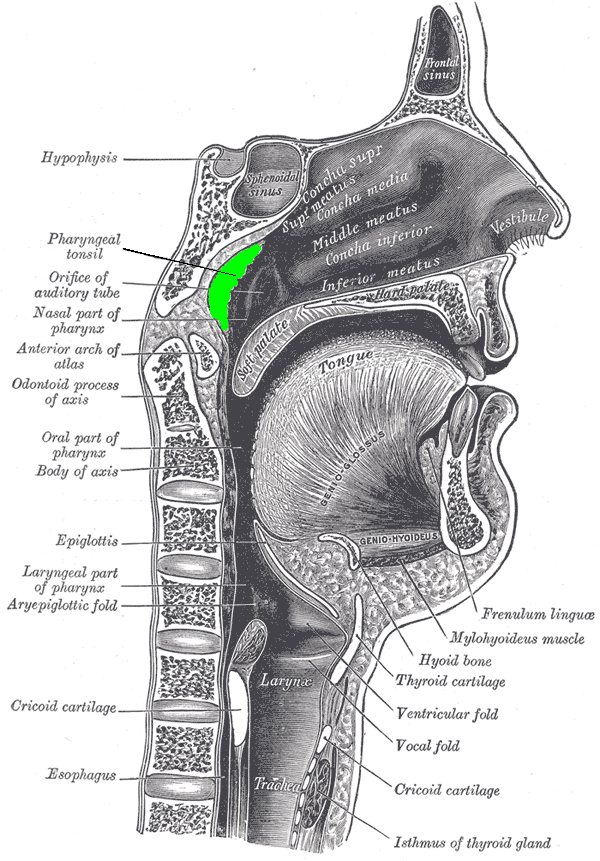What is adenoid? What are the adenoids infection symptoms, treatment and complications?
Adenoids; are folds of tissue, similar to tonsils, located in the nasopharynx, the area in which the nose leads to the back of the throat. Composed of lymphatic tissue covered with ciliated epithelial cells, they are present in early life but tend to shrink or atrophy in adulthood. Their purpose is uncertain, but they do participate in the formation of lymphocytes (a white blood cell type).

Source : wikipedia.org
Infection:
Like the tonsils, adenoids are a frequent source of bacterial infection, particularly in young children. When infected, the adenoids become enlarged and drain pus and mucus into the throat, blocking the normal airway through the nose. This respiratory blockage gives rise to the so-called “adenoid facies,” a facial expression in which the person affected has a staring, vacant look and keeps the mouth open in order to breathe. Infection from adenoids can spread to the opening of the Eustachian tubes of the ear or- into the tonsils below the adenoids.
Treatment:
Since they infect each other, diseased tonsils and adenoids usually are removed together by surgery, unless the individual is beyond adolescence and the adenoids have atrophied. Adenoids are removed surgically by inserting a curette (a scoop-, loop-, or ringshaped instrument) behind the soft palate and scraping the adenoids off close to the posterior wall of the pharynx. Adenoid tissue around the Eustachian tubes is curetted similarly. Recovery occurs in five to six days, once residual hemorrhage and suctioning of secretions have been accomplished. After adenoidectomy, a child may “talk through his nose” (nasal speech) for three or four weeks until he learns how to bring his soft palate and the back of the throat together.
Complications:
The most serious complication of adenoid infection, if allowed to go untreated, is the obstruction of the opening of the Eustachian tube from the ears. This allows pus to back up into the middle ear from the oral cavity and may lead to ear drum perforation, hearing loss, and even mastoiditis.
Also, lymphoid tissue may grow back in the area where adenoids are removed, especially where allergic conditions exist. In rare cases, additional surgery may be needed.
***This article is for informational purposes only. It is not a doctor warning or recommendation.